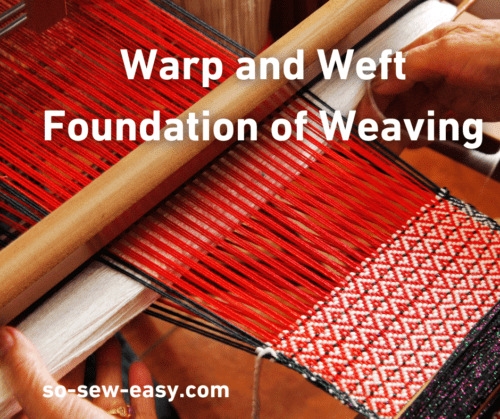
Warp and weft are the two basic components of weaving, forming the backbone of any woven fabric. These terms refer to the two sets of threads that are interlaced at right angles to create a textile. The warp threads are the ones that run lengthwise, while the weft threads run across the width of the fabric. Together, they create a strong and stable structure for the textile.
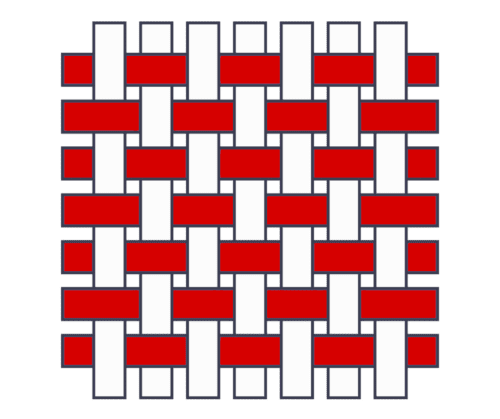

Understanding the importance of warp and weft is crucial for anyone interested in the art of weaving or the textiles industry. They influence the appearance, texture, and strength of a fabric, making them essential for the creation of any woven textile. Without warp and weft, there would be no fabric to wear, decorate our homes, or utilize in countless other ways.
Importance of Warp and Weft in Weaving: The Foundation of Textiles
Warp and weft threads are the building blocks of any woven fabric, and their arrangement is what gives the textile its unique characteristics. The interaction of these threads determines the fabric's overall appearance, strength, and flexibility. They also dictate how the fabric will behave when subjected to various forces, such as stretching or folding. The specific arrangement of warp and weft threads can greatly affect the final product's texture, drape, and durability.
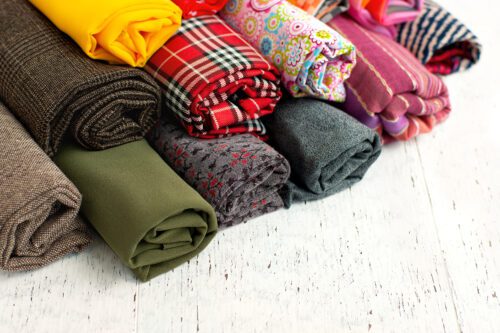

Moreover, the choice of fiber and the way the threads are spun can also have a significant impact on the fabric's properties. For instance, tightly twisted threads will result in a stiffer fabric, while loosely twisted threads will create a softer, more pliable textile. Ultimately, the combination of warp and weft threads determines the quality and functionality of any woven material.
Traditional vs. Modern Fabric Weaving: A Brief Comparison
Traditional weaving techniques have been practiced for thousands of years, with ancient civilizations across the globe creating intricate patterns and designs. Handlooms were the primary tools for weaving, where the warp threads were stretched vertically, and the weft threads were passed through by hand or with the help of a shuttle. These methods allowed for a high degree of control over the weaving process and the creation of highly detailed patterns. However, hand weaving was labor-intensive and time-consuming.
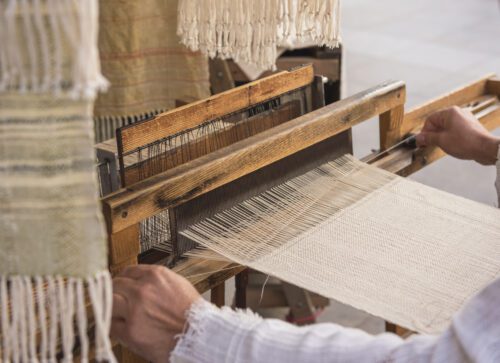

Modern weaving methods have evolved to become faster and more efficient, thanks to the introduction of mechanized looms. These machines have not only sped up the weaving process, but also allowed for more complex patterns and larger production volumes. Although mechanized weaving has its advantages, it has also led to a loss of some traditional weaving techniques and the unique characteristics that come with handmade textiles. Despite this, there remains a growing appreciation for handwoven fabrics and the skills required to produce them.
Exploring the 4 Basic Weaves: The Foundation of Fabric Design
The four basic weaves are the building blocks of countless textile designs and are essential to understanding the world of woven fabrics. These foundational weaves include plain weave, twill weave, satin weave, and basket weave. Each of these weaves has its unique characteristics, making them suitable for different applications and aesthetics.
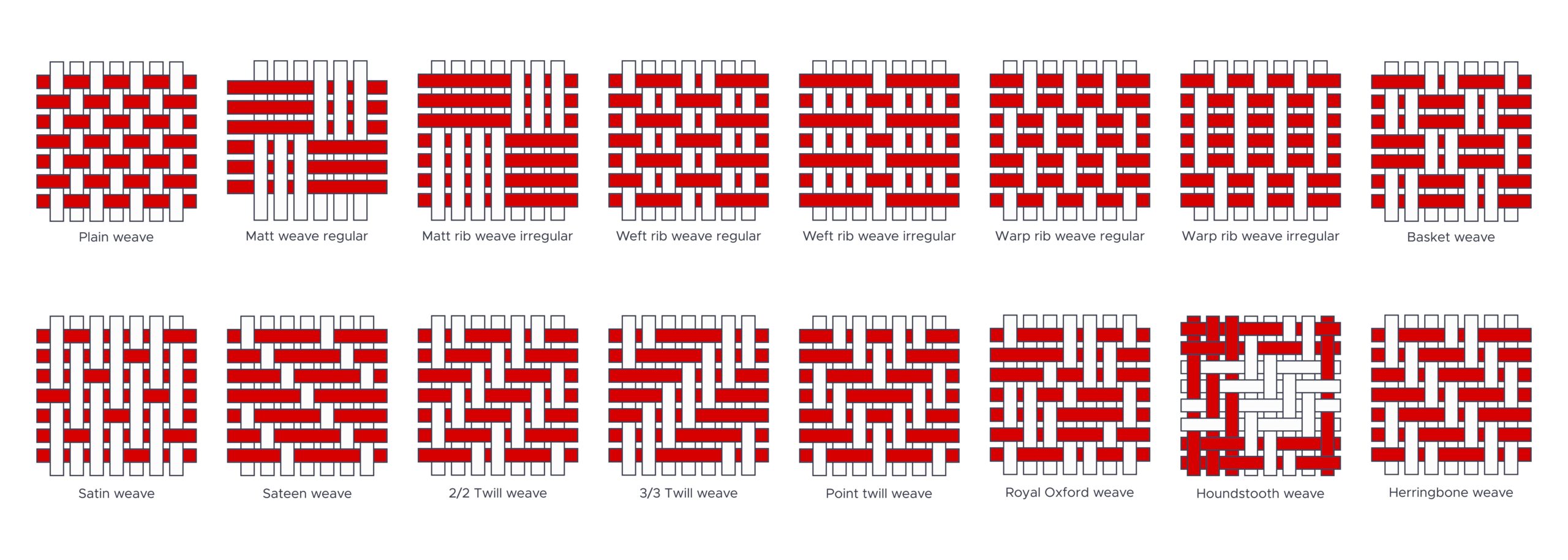

Plain weave is the simplest and most common type of weave, characterized by a balanced interlacing of warp and weft threads. Twill weave is identified by its diagonal lines or patterns, created by the weft thread passing over multiple warp threads before going under one. Satin weave features a smooth and shiny surface, achieved by having fewer interlacing points between the warp and weft threads. Lastly, basket weave is a variation of the plain weave, where multiple warp and weft threads are grouped together, creating a checkerboard pattern with a more textured surface.
5 Common Types of Weaves: Expanding Your Textile Knowledge
Apart from the four basic weaves, there are numerous other types of weaves that offer unique characteristics and applications. Some of the more common types include Jacquard, Dobby, Pile, Leno, and Double Cloth weaves. Each of these weaves offers its own distinct features and benefits, making them suitable for a range of purposes.
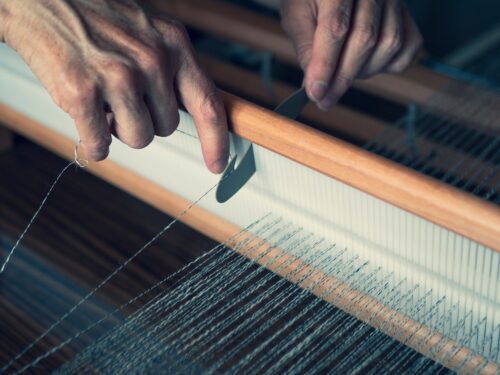

Jacquard weaves are known for their intricate patterns and designs, created using a special loom that allows for individual control of warp threads. Dobby weaves are similar to Jacquard but typically have smaller, geometric patterns. Pile weaves, such as velvet and terry cloth, feature loops or cut fibers on the surface, giving them a soft, plush texture. Leno weaves use a unique technique where warp threads are twisted around the weft, creating a more open and stable structure. Lastly, Double Cloth weaves consist of two separate layers of fabric that are interconnected, providing additional thickness and insulation.
High and Low Thread Count Fabric: What Does It Mean?
Thread count refers to the number of warp and weft threads per square inch of fabric. It is often used as an indicator of fabric quality, with a higher thread count usually associated with a smoother, more luxurious feel. However, thread count is not the sole determinant of a fabric's quality. The type of fiber used, the way it's spun, and the specific weaving technique employed can all affect the overall quality and feel of a textile.
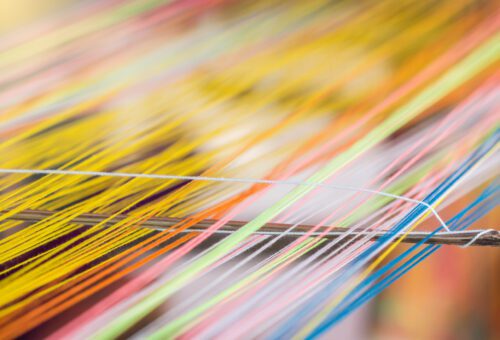

High thread count fabrics are generally denser and have a finer texture, making them more comfortable and durable. On the other hand, low thread count fabrics tend to be more breathable and have a coarser texture. Both high and low thread count fabrics have their own advantages, and the choice between them often depends on personal preference and the intended use of the fabric.
Tips on Choosing the Right Type of Weave for Your Clothes
Selecting the appropriate weave for your clothing can greatly impact comfort, durability, and style. To make the best decision, consider the following factors: intended use, climate, personal style, and care requirements. The weave you choose should align with your needs and preferences in these areas.
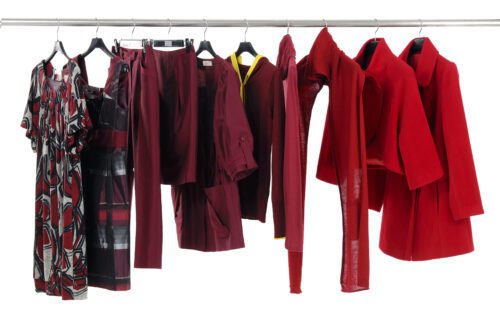

For example, if you live in a hot climate, consider lightweight fabrics with open weaves, like linen or cotton, to promote breathability. If you prefer a more structured look, opt for fabrics with a twill or basket weave. For luxurious garments, satin or Jacquard weaves may be more suitable. Additionally, consider the care requirements of the fabric, as some weaves may be more delicate and require special handling. Ultimately, understanding the various weaves and their characteristics will help you make an informed choice when selecting the perfect fabric for your clothes.
Embracing the Art of Weaving: A Timeless Craft with Endless Possibilities
Understanding the intricacies of warp and weft, as well as the wide range of weaves available, allows you to appreciate the art of weaving and the skilled craftsmanship that goes into creating beautiful textiles. Whether you're a fashion enthusiast, a textile aficionado, or simply someone who appreciates the beauty of well-crafted fabrics, the world of weaving offers a rich history and endless possibilities for self-expression.
By learning about different weaving techniques and incorporating various weaves into your wardrobe, you can not only enhance your personal style but also support the continuation of this timeless craft. As we continue to celebrate and appreciate the world of textiles, both traditional and modern, the art of weaving will remain a cornerstone of our cultural heritage and an essential part of our daily lives.








Where can I find a list of the informative articles that you put out in each email? Like the one today on weaving?
The best place would be Pinterest, under the Sewing Tutorials Tips. Also, you can search the site.